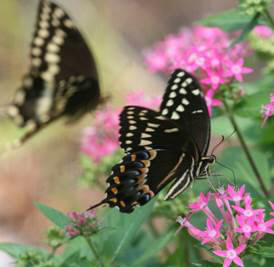Wormsloe Butterfly Gardens
http://butterflygardens.weebly.com/
Ania Majewska, Sonia Altizer, Andy Davis
Odum School of Ecology
University of Georgia
Unprecedented decline of pollinators is a pressing conservation problem arising from climate change, disease and habitat loss. Pollinator--‐friendly gardens could afford lost natural habitat and serve as corridors between fragmented habitats. Further work is needed to quantify the effects in a variety of pollinators, including butterflies, which have not been examined. To elucidate the role of gardens on abundance and recruitment, we use a field-based experimental approach, the first to our knowledge, to assess whether gardens are beneficial to butterfly communities.
The Gardens
- 12 gardens, 25 by 50 feet, fenced, equally watered
- 12 types of perennials /garden
- 128 plants arranged in 8x16 matrix with random positions
- Gardens consist of all native or all exotic plants and receive high or low maintenance (weeding)
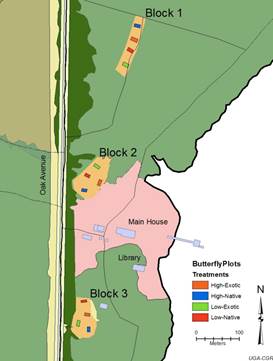
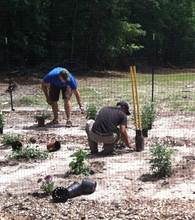
Can the intensity of garden maintenance and native vs exotic plants affect butterflies?
- Higher weeds, as seen on the right, might provide effective hiding sites from predators
- Exotic plants may be attractive but serve as poor quality food for adults and caterpillars
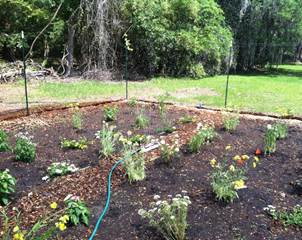
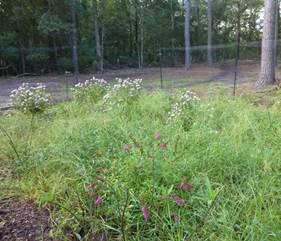
How do we know gardens help butterflies?
- By monitoring host plants for eggs and caterpillars, we can assess reproduction.
- We collect caterpillars to rear them in lab and check them for parasites and disease
- We observe gardens for presence and number of predators
- Using capture--‐mark--‐recapture, we determine abundance and survivorship

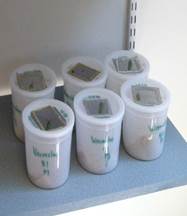
What are the threats to butterfly survival?
- Natural enemies include birds and invertebrate predators: praying mantids, wasps, and assassin bugs
- Butterflies are also victim to parasites: protozoans such as Ophryocystis elektroscirrha and parasitoids such as tachinid fly
2013 Butterfly Gardens Basemaps
